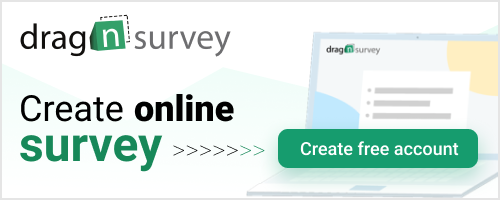The qualitative research aims to collect non-numerical data. Its implementation meets a company’s need to have detailed and descriptive information available to understand the expectations, behaviors and attitudes of a group of consumers.
The qualitative research is generally conducted upstream or downstream of a quantitative research to supplement the data collected by the company. This type of survey is used to learn about a new market, reduce the scope of investigation and draw up initial hypotheses.
How to successfully conduct a qualitative research? This article presents the steps and types of questions to use.
>> To group quantitative and qualitative research in one survey, click here

Conduct a qualitative research in 5 steps
The qualitative research makes it possible to obtain in-depth data to understand a phenomenon or confirm a hypothesis.
To conduct it successfully, it is important to respect certain steps.
1. Define the issue
The first step of a qualitative research is to define the issue. Other sub-questions related to the subject studied may stem from this initial question.
The issue allows to contextualize and frame the research. It gives a precise objective and avoids any waste of time during the survey.
In the case of a research concerning a potential clientele, this step guarantees an accurate targeting of the market segment.
2. Write the questions
The issue should allow to identify questions or sub-questions related to the object of the research. These questions will be used to determine the outlines of the research but also the methods to be used to collect the data.
The questions used will be open-ended. Respondents will therefore be able to express themselves freely by arguing their answers. This type of question differs from closed-ended questions where respondents must check their answers.
3. Collect the data
To collect data as part of a qualitative research, it is possible to rely on 3 of the following techniques: interviews, observation and group discussions.
The interview
The interview consists of addressing respondents directly to gather information. In this context, this exercise can be non-directive in order to allow the respondent to speak freely. The interview can also be semi-directive when an interview guide is set up to frame the exchange. The interview is directive when the respondent answers questions in writing.
In the case of a directive interview, the use of an online survey allows respondents to express themselves without being in contact with the interviewer. The comments can then be processed directly by the online survey software using Artificial Intelligence.
The group interview
The group interview can take the form of an observation group discussion.
Group discussions
The focus group is a group discussion framed by a moderator and an observer. It is particularly suitable for gauging future customers’ reactions regarding a company’s new service or product offering.
4. Analyze the data
The data analysis aims to research the words and expressions used to describe the product or service concerned by the research.
With online survey software, comments are analyzed directly through Artificial Intelligence. Across all texts, a word cloud is returned. In addition, if the comments are intended to collect feelings, the AI will return a satisfaction index and word clouds for positive and negative feelings.
The use of online survey software offers the possibility of processing the results computationally and not manually. The risk of error is eliminated and allows to quickly produce reliable results.
5. Share the results
Sharing the results is the last step of the qualitative research. It makes it possible to evaluate their relevance with the issue defined at the beginning of the research and thus demonstrate how much the information collected responds to the questions asked.
The most important thing during this phase is to ensure that an overly theoretical report is not produced. The report should not contain numerical data and statistics in order to facilitate understanding.
Example of qualitative questions
Open questions are used to obtain the most informative possible answers. The results are more difficult to analyze compared to closed questions, but have the advantage of being more substantial. Here are two examples of open questions:
- What are your expectations regarding a travel website?
- What would you like to change in our online store system?
With online survey software, it is possible to limit the number of characters to enter in an open question. This facilitates the analysis of the results because respondents provide more concise answers.
More about survey:
5 Essential Typeform Replacements, click here
Breaking Down JotForm Alternatives, click here
5 Must-Try SurveyMonkey Alternatives, click here
6 Dynamic Alternatives to Google Forms, click here
Measuring Customer Happiness with CSAT, click here
Calculating Net Promoter Score Made Easy, click here
Exploring Quantitative Research Techniques, click here
Selecting the Finest Software for Online Quizzes, click here
A Guide to the 10 Superior Online Survey Building Tools, click here
Read the article:
French – étude qualitative, click here
German – qualitative Forschung, click here
Portuguese – pesquisa qualitativa, click here
